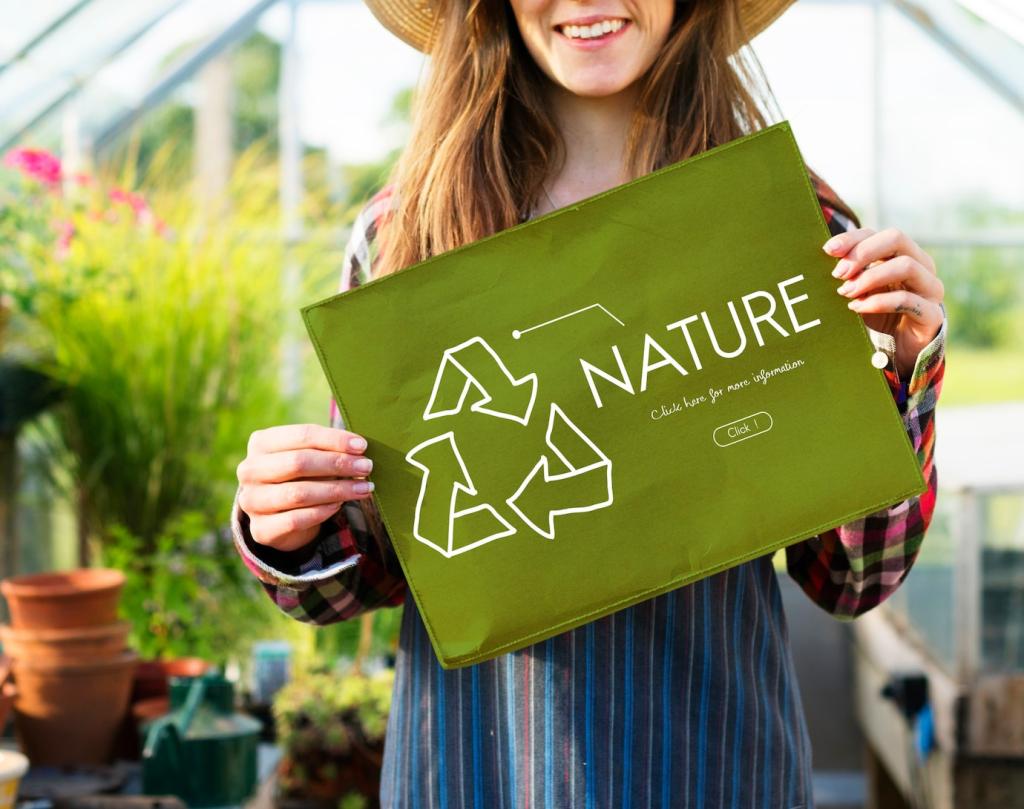Selected theme: Biodegradable Insulation in Exterior Design. Discover how nature-friendly materials can enhance façades, boost energy performance, and tell a meaningful sustainability story. Join our community, share your questions, and subscribe for hands-on guides and inspiring case studies.
Why Biodegradable Insulation Belongs on the Outside
Continuous Warmth, Fewer Thermal Bridges
Exterior insulation wraps the building like a cozy blanket, reducing thermal bridges at studs and floor lines. With biodegradable options, you gain carbon-smart comfort without sacrificing aesthetics or long-term resilience when detailed with proper weather protection.
Breathable Walls That Manage Moisture
Many bio-based insulations are vapor-open, allowing assemblies to dry outward. When paired with rainscreens and breathable renders, façades stay healthy, minimizing mold risk and preserving the tactile beauty of natural materials across seasons.
Embodied Carbon and a Lighter Footprint
Plant- and nature-derived fibers often store biogenic carbon. Choosing them for exteriors cuts embodied emissions, aligning elegant design with climate goals. Share your project goals and we’ll help weigh footprint, cost, and performance trade-offs.


Material Palette: Cellulose, Wood Fiber, Hemp, Cork, and Mycelium
Made from recycled paper and treated for durability, cellulose can be dense-packed behind sheathing or used in panel systems. It pairs well with ventilated façades and excels in retrofits where cavities and continuity need creative solutions.
Material Palette: Cellulose, Wood Fiber, Hemp, Cork, and Mycelium
Rigid wood fiber panels offer structure-friendly detailing, strong acoustic benefits, and vapor permeability. With proper weather layers, they integrate smoothly beneath cladding, creating a natural, quiet, and energy-efficient envelope that is easy to design around.
Exterior Assemblies That Work
Combine a structural wall, smart air–water barrier, wood fiber insulation, battens, and cladding. The cavity promotes drying, fasteners are straightforward, and the façade retains crisp lines while delivering quiet interiors and consistent thermal performance.
Hemp-lime substrates accept breathable mineral renders that protect from rain while allowing vapor to escape. The result is a soft, timeless surface with gentle shading that complements natural landscapes and modern-minimalist volumes alike.
Expanded cork boards can act as both insulation and textured finish when properly protected at edges and openings. Designers love the warm, tactile surface and the way cork ages gracefully, deepening a façade’s character over time.
Performance, Codes, and Practical Realities
Bio-based materials deliver competitive thermal performance, particularly when used continuously on the exterior. Balance thickness with façade proportions, window jamb strategies, and cladding attachment to hit comfort and energy goals elegantly.
Extra insulation thickness invites creative battens, reveals, and shadow play. Designers leverage depth to sculpt façades, turning sustainability upgrades into signature lines that catch light beautifully throughout the day.
Design Language: Texture, Shadow, and Story
Field Notes: A Lakeside Retrofit That Changed a Neighborhood
From Drafty to Delightfully Quiet
A family retrofitted with wood fiber boards behind a cedar rainscreen. By fall, evening winds no longer whistled through sockets, and their living room conversations did not compete with passing boats and weekend traffic.

Plan the Layers, Protect the Edges
Sequence weather-resistive barriers, tapes, and flashings before installing insulation. Guard vulnerable edges with trims and drips, and keep clear ventilation paths so assemblies dry predictably in changing seasons.
Fasteners and Cladding Attachment
Use appropriately sized screws and battens rated for exterior use and expected loads. Test a small mock-up to confirm compression, alignment, and drainage, then scale confidently across elevations and corners.
Seasonal Checkups for Peace of Mind
Walk the façade twice a year to inspect joints, vents, and penetrations. Quick touch-ups on sealants, finishes, and screens help biodegradable systems thrive and look fresh with minimal effort over time.
Circular Design and End-of-Life Thinking

Design for Disassembly
Favor mechanical fixings and reversible layers so insulation can be removed, reused, or reprocessed. Label components discreetly to guide future teams, building a practical roadmap for low-waste renovations.

Biogenic Carbon and Material Reuse
Keep bio-based materials in service as long as possible to store carbon. When components tire, consider secondary uses, community salvage, or manufacturer take-back programs to extend their useful life.

Compost and Safe Return to Nature
Some biodegradable products can return to the biosphere under appropriate conditions. Verify treatments, remove contaminants, and coordinate responsible pathways so the final chapter remains as gentle as the first.
Join our mailing list
